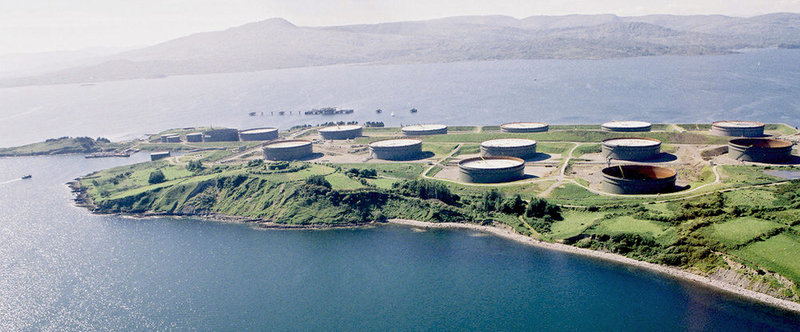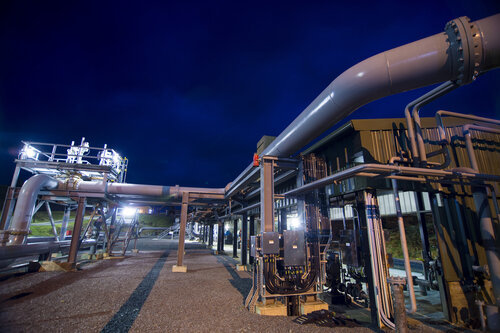INSIGHT
The ballad of Bantry Bay: how an Irish oil terminal took centre stage amid Covid-19
The recent arrival of the first US oil at Zenith’s Bantry Bay terminal cemented the reputation of the facility on the Irish coast as a strategic location serving key trade routes. Julian Turner talks to Zenith about the oil storage shortage, Covid-19, and the rise of West Texas Intermediate.
Credit: Henning Flusund
B
antry Bay, on Ireland’s ruggedly beautiful south-west coast, has borne witness to its fair share of conflict and tragedy over the past two centuries. Irish revolutionary Wolfe Tone led an aborted attempt at a rebellion there in December 1796; the square in Bantry is still named after him.
More recently, in 1979, the oil tanker Betelgeuse, owned by Total S.A., exploded in Bantry Bay, at the offshore jetty for the oil terminal at Whiddy Island. The explosion and resulting fire claimed the lives of 50 people.
Bantry Bay’s relationship with the oil and gas industry stretches back to the opening of the Whiddy terminal in May 1969. Half a century on, the deepwater facility – with a capacity of 1,400,000 cbm (8.8 million barrels) and a deep 30m draft – remains a critical commercial link in north-west Europe for crude and refined products, and an important part of Ireland's strategic petroleum reserve.
“Bantry Bay provides logistical advantages and optionality to distribute crude because the terminal is able to receive very large crude carriers and is close to all of the major European refining centres in the UK, ARA, Germany, and the Mediterranean,” states Jay Reynolds, chief commercial officer at Zenith Energy Management LLC, which acquired the terminal from Phillips 66 in February 2015.
“The terminal was constructed in 1968 for the express purpose of importing large cargoes of foreign (AG) crude and has a long history of supporting European refining. It has almost two million barrels of tankage in crude service, plus we have the ability to swing tanks between crude and products.”

Zenith acquired Bantry Bay from Phillips 66 in February 2015.
Crude awakening: US oil supplies and the contango market
As a key distribution point for foreign and local oil into the European refining system, Bantry Bay is equipped to handle multiple types of crude, including both North Sea and West African grades.
In April, four tankers – two of which were originally bound for the Netherlands and the UK – carrying a total of 2.4 million barrels docked in Bantry Bay, the first time US oil had been delivered to the terminal.
According to Energy Information Administration data, US crude exports to Ireland peaked at 2.4 million in January and the trend of diverting supplies to lower-profile locations is likely to continue, with global demand for oil having plummeted in the wake of the Covid-19 crisis and crude storage at a premium.
Bantry is one of only two independent terminals in western Europe that can handle ultra-large crude vessels
“While Bantry Bay recently received its first US crude cargo, we see this as a natural extension of US crude oil in the international trade flow and being driven by market fundamentals,” says Reynolds.
“It is a logical destination for US crude, given its capabilities and offerings including deep draft, large tank sizes, mixing capabilities, laboratory testing, and proximity to all the major European refining centres, making it exceptionally well-suited to store and distribute crude oil and products. It is also one of only two independent terminals in western Europe that can handle ultra-large crude vessels.”
The current contango market, where the price of oil in the spot market trades below the price for future delivery, means investors with access to offshore storage facilities are willing to pay tanker owners well to receive oil at a later date, locking in profits for themselves and their shareholders.
Go west: why WTI is displacing other forms of crude
Bantry Bay’s popularity also speaks to the rise of West Texas Intermediate (WTI), which is gaining traction in Europe compared with Brent crude. According to Reynolds, when it comes to the WTI trend, Zenith saw it early and saw it whole, investing in Bantry Bay to serve this burgeoning market.
“When we acquired the terminal in 2015, there had been discussions about the US lifting its crude export restrictions; however, it was not a certainty,” says Reynolds. “However, we had conviction that Bantry Bay would attract strong interest in the crude trade and since acquiring the terminal we have consistently had crude tanks leased to customers.
“WTI and other US crude grades are steadily displacing other crude grades in European refining and because of this, WTI is naturally seeking additional distribution points in order to satisfy demand.
Prior to the coronavirus pandemic, the US was exporting over three million barrels a day
“Prior to the coronavirus pandemic, the US was exporting over three million barrels a day (b/d), with refineries in north-western Europe as the top importer of US crude at more than 300,000 b/d.
“As WTI and other US crudes gain further acceptance by European refiners, we expect growth in export volumes to Europe through the Covid-19 recovery phase and beyond. This should result in an increased need for segregated storage for these grades and these flows fit well into Bantry Bay.
“At Zenith, we believe the facility will continue to receive US crude.”

Bantry Bay has a capacity of 8.8 million barrels, and a deep 30m draft.
A full tank: demand for oil storage set to continue
At the time of writing, the shortage of oil storage facilities remains a significant issue for the global industry, as oil prices slipped again thanks to record high US crude inventories and concerns among investors and analysts that a resurgence in Covid-19 cases could curtail a revival in fuel demand.
On 25 June, WTI crude futures dropped 57 cents to $37.43 per barrel, having dropped $2.36 on the previous day. Brent crude futures fell 43 cents to $39.88 per barrel, after falling $2.32 the day before.
With a capacity of more than 2.5 million cbm, Zenith Europe is well positioned to cater for crude surpluses. Since 2015, the company has invested more than €120m in upgrading its terminals’ tanks, piping, and marine and truck-loading infrastructure. Around half of its storage is in Amsterdam, the ARA’s key hub for gasoline and gasoil blending and trading, with the balance located at Bantry Bay.
“As a growth-orientated company, we are always evaluating acquisition opportunities,” Reynolds says. “Since our start in 2014, we have demonstrated an ability to work collaboratively with asset owners of all types – super-majors, public and private operators, and financial sponsors – in order to conclude win-win deals.”
Frankly, I wish we had more tanks available
The only frustration for Zenith is that all of its storage capacity at Bantry Bay is already contracted.
“Depressed demand caused by Covid-19 has moved the market into a contango structure where the future price of oil is higher than the prompt price; when this happens, storage tanks become highly sought after,” says Reynolds.
“However, even though market forces have increased demand for storage, all of our tankage is fully contracted. Since our ownership of Bantry Bay, we have had commercial utilisation of over 95% and this has limited our ability to participate in the current contango-driven market.
“Frankly, I wish we had more tanks available.”